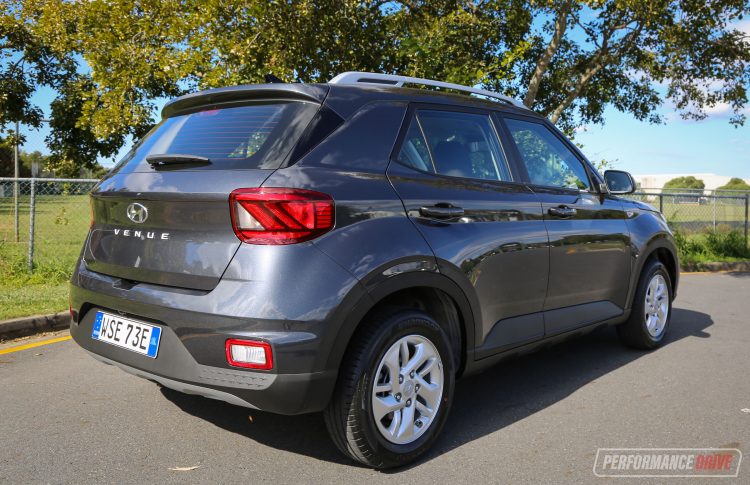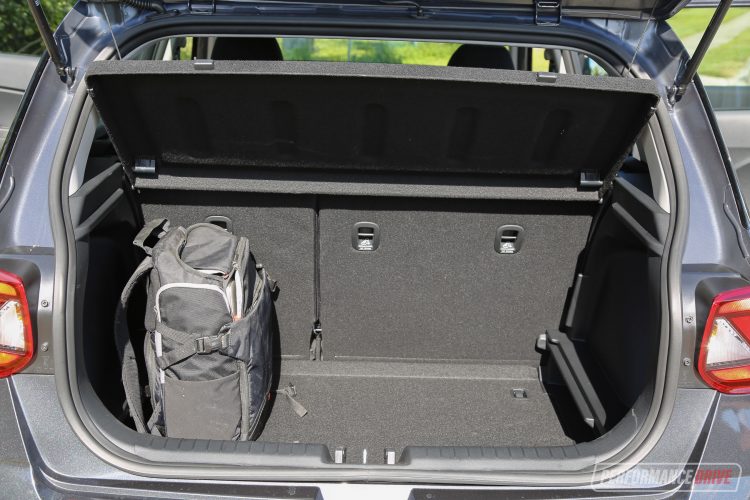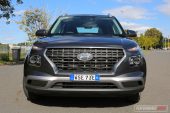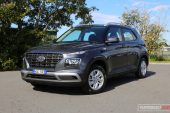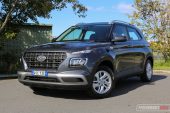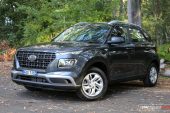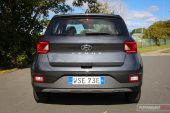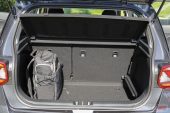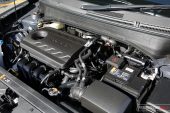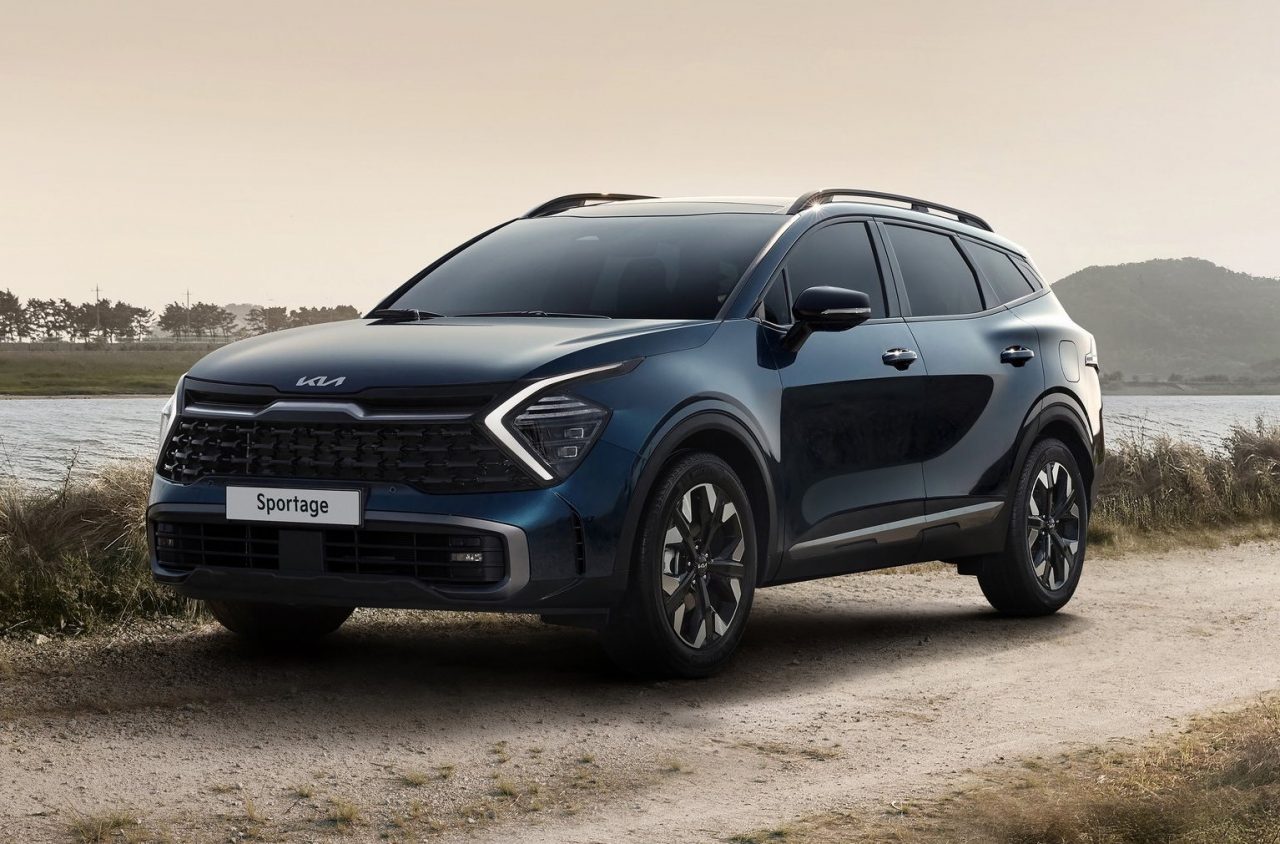The compact SUV market is so fierce nowadays that Hyundai’s own lineup has started to cannibalise itself. The company has positioned the Venue as the brand’s entry-level compact SUV, followed by the Kona in the small SUV class. That’s because these are among the fastest-growing market segments. So what does the Venue bring to the table?
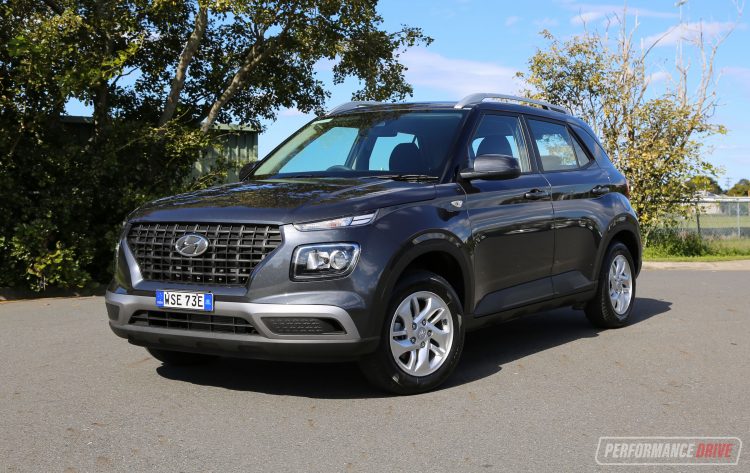
We imagine the Hyundai Venue was designed with one simple design brief: build a compact SUV primed for the urban environment that is packed with enough features to keep up with its competitors, all at a low price.
Hyundai has scrapped its previous entry-level Go variant and replaced it for 2021 with a higher-spec base model (simply called Venue) that adds a set of alloy wheels and some interior improvements. This means Hyundai is committed to providing more value in the entry-level model rather than pushing buyers into the mid- and higher-spec models, and you can’t help but admire that approach.
Let’s see how well the Venue performs in and around town, where the Venue will most likely spend most of its time as an urban run-around. This automatic version starts from $22,960, or just $20,940 for the manual (excluding on-roads).
2021 Hyundai Venue – THE SPECS
[column width=”47%” padding=”6%”]Engine: 1.6-litre four-cylinder
Output: 90kW@6300rpm / 151Nm@4850rpm
Transmission: Six-speed auto
Drive type: Front-wheel drive
Wheels: F: 15×6.0, 185/65
ANCAP: Four stars
Tare weight: 1199kg
Power-to-weight: 13.32:1 (kg:kW)
Official fuel economy: 7.2L/100km
Economy during test: 6.5L/100km
Fuel capacity/Type: 45L/91 RON[/column] [column width=”47%” padding=”0″]Power efficiency: 12.50kW:L/100km
0-60km/h: 4.63 seconds*
0-100km/h: 10.19 seconds*
60-110km/h: 7.85 seconds*
1/4 mile: 17.82 seconds at 130.8km/h*
Max acceleration: 0.605g
100-0km/h braking: 3.03 seconds at 38.98 metres*
Max deceleration: -1.199g
Decibel at idle: 38*
Peak decibel at 60-100km/h: 80*
Priced from: $22,960[/column][end_columns]
* Performance figures based on manual version previously tested. Factory claims may be different
2021 Hyundai Venue – THE PACKAGE
In this review we’re testing Hyundai’s entry-level variant, which is actually a great exercise as it gives us an opportunity to determine just how much value is on offer, especially as this is now Hyundai’s most affordable new car in Australia. It also informs us as to whether or not Hyundai, like many manufacturers, is holding back on certain features to entice buyers into stepping up to the mid-level Active or range-topping Elite.
All up, the entry-level Venue comes with all the standard features that you’d expect and demand from a new car, as well as a few added bonuses, namely some tech upgrades and Hyundai’s safety suite. As standard, the entry-level Venue comes fitted with an 8.0-inch touch-screen infotainment system with wireless Apple CarPlay and Android Auto, cruise control, cloth seats, roof rails, heated mirrors, reversing camera, a set of daytime running lamps, and a four-speaker audio system.
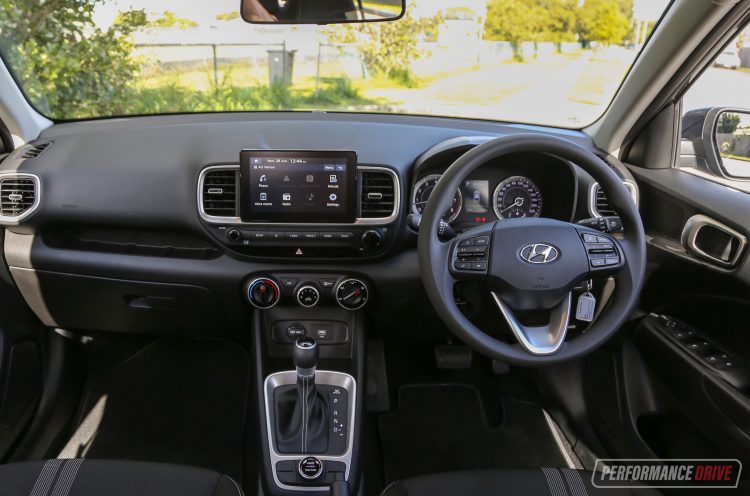
The front profile of the car doesn’t have any of the tell-tale signs of an entry-level variant, with a set of headlights and daytime running lamps on either side of the striking front grille design. The side has a few design lines that make their way to the back of the car, with the rear presenting a somewhat awkward-looking set of small lights and Venue badging. It’s not our job to tell you whether or not it’s a good-looking car, because beauty is in the eye of the beholder. All we can say, though, is that after spending some time in the Venue, the charm began to grow on us – but not from all angles.
The Venue’s boxy proportions mean there’s a huge amount of headroom in the front of the cabin which, combined with a low-riding dashboard, presents a huge amount of visibility. The driver and front passenger are treated to a straight-forward and predominantly black cabin design, with very few things to get excited about. Overall, the materials used definitely err on the cheap side, but the buttons and dials retain a somewhat premium feel about them.
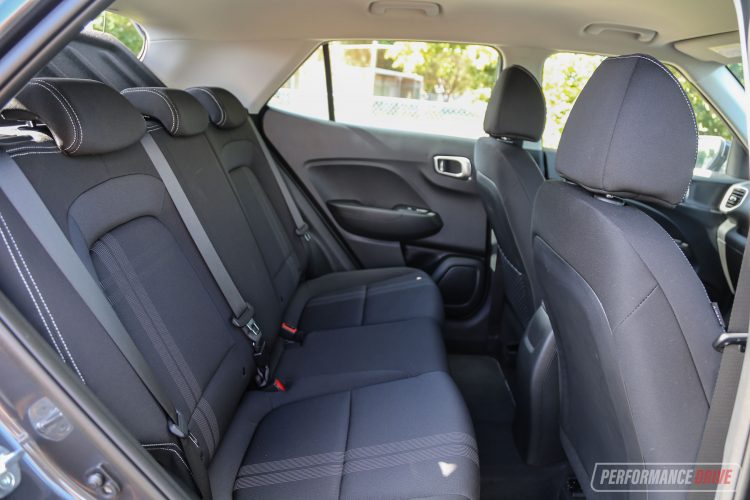
The up-side to all of this, though, is that Hyundai has prioritised practicality, meaning there’s a host of storage spaces that will prove valuable while living with the Venue over time. The rear of the cabin has just enough space for two adults, although you’ll want to be careful about long trips if the driver is tall.
There’s 355L of boot volume available, with rear seats that fold using a 60:40 split mechanism. There’s two ISOFix anchor points on the rear seats, with three top tether mounts behind. Space is limited in the rear which can make the process of installing baby seats a bit of a chore, but the Venue can still get the job done.
As for safety, the Venue has been rated four stars by ANCAP. It comes packaged with Hyundai’s Safety Sense suite on even the entry-level model. This package includes autonomous emergency braking, lane keep assist, lane departure warning, as well as front, side and curtain airbags. One downside here is that important features for the city, like blind-spot monitoring and rear cross-traffic alert, are reserved for the Elite variant.
2021 Hyundai Venue – THE DRIVE
Hyundai has fitted all models within the Venue lineup with a 1.6-litre petrol four-cylinder that throws 90kW and 151Nm to the front wheels via a six-speed automatic or manual transmission. The automatic transmission behaves itself around town, but has a tendency to drop down a gear while on the highway to maintain speed, resulting in an awful lot of thrashing from the little engine.
Surprisingly, the Venue feels slightly more punchy around town than the 90kW figure might suggest, thanks to its 1225kg kerb weight. This, combined with a short wheelbase and extremely impressive turning circle, means the Venue is perfectly primed for the urban environment. It doesn’t have a problem escaping the confines of a tight carpark or performing a U-turn outside your local cafe without holding up traffic.
While it might be billed as a compact SUV, there’s not really any added ride height bonuses on offer in the Venue. It’s merely a styling exercise that offers the visual cues of a compact SUV, but feels and drives more like a typical hatchback.
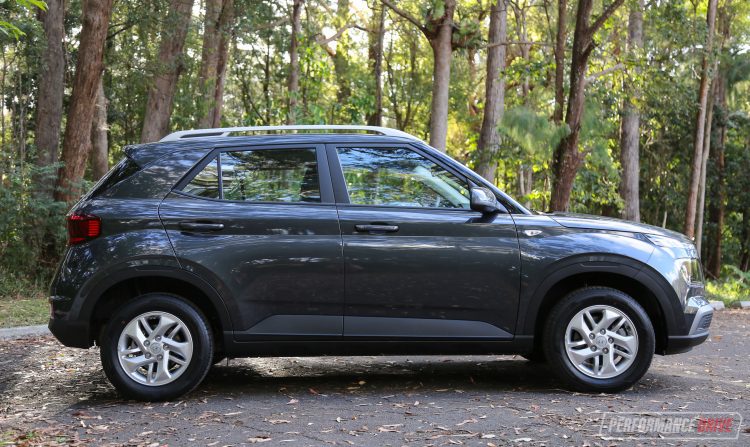
Hyundai has designed the Venue’s steering to be extremely light, so parking and low-speed manoeuvres are child’s play. This comes at the expense of feel and sensation when you’re up to speed, but we imagine very few people looking at the Venue would care about just how alive the steering is. The ride quality is perfectly acceptable, although the chassis does tend to transmit more of the medium-sized bumps through the cabin than you’d like.
After our time in the Venue, we had two gripes in terms of the drive. One, the driver’s armrest on the door is finished in some of the hardest plastic known to man, so the driver’s elbow can get tender after a short time. The second gripe is that the rear C-pillar is extremely wide, resulting in a massive blindspot that takes away a lot of the confidence while reverse parallel parking that cars like these should tackle without a problem. If these gripes seem trivial, take it as evidence as to just how capable the Venue is as an urban run-around.
In terms of the Venue’s economy, we were actually able to better the official combined cycle rating of 7.2L/100km, returning average figures of between 6.2-6.5L/100km in a mixture of time spent in town, and on country B-roads. While the spongy throttle pedal can prove frustrating at times, it no doubt helps the economy reach some pretty impressive figures without even really trying.
2021 Hyundai Venue – THE VIDEO
2021 Hyundai Venue – THE VERDICT
We think that Hyundai has cleverly positioned the base model of its entry-level compact SUV for the price. Some manufacturers dangle a carrot with their entry-level model while skimping out on features, hoping to get buyers to pay more than they had originally planned. The Venue, on the other hand, presents buyers with all the features they need, and it doesn’t punish them for not stepping up to the Active or Elite variants.
With all things considered, the entry-level Venue presents the best value for money of the entire Venue lineup. Sure, some added luxuries would be welcome, but opting for more expensive variants brings the price into a category that isn’t necessarily reflective of an entry-level car.
[column width=”47%” padding=”6%”]PROS:
– Impressive economy in town and on the highway
– Generous standard equipment for entry-level model
– Effortless urban run-around
– Friendly price
[/column] [column width=”47%” padding=”0″]CONS:
– 15-inch alloys look undersized for wheel arches
– Some key safety features reserved for Elite variant
– 4-star ANCAP safety rating[/column][end_columns]
As always, if you’re thinking about buying a new car don’t forget to click here to speak with our car buying specialists.
